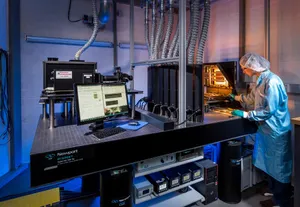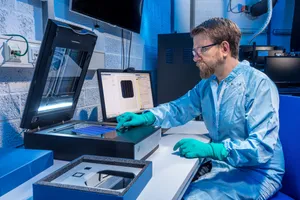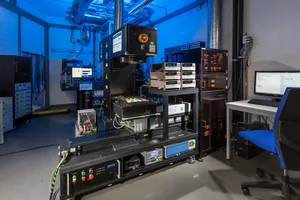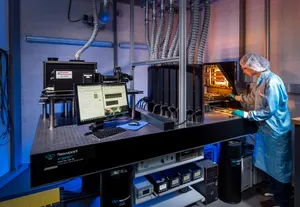
ISFH CalTeC: Solarzellen
Das Solarzellen-Kalibrierlabor ist auf die präzise Vermessung und Kalibrierung von Silizium-Solarzellen spezialisiert – von kleinen Laborzellen (10x10 mm2) bis hin zu großflächigen Industriesolarzellen mit einer Kantenlänge von 210 mm.
Umfang der Kalibrierdienstleistungen
Wir bieten akkreditierte Messungen für die charakteristischen Kennwerte von Solarzellen an:
- Messung der Fläche (A) der Zelle oder Blendenmaske
- Bestimmung der Spektralen Empfindlichkeit (SR)
- Strom-Spannungs-Kennlinie (I-V):
- Kurzschlussstrom (Isc)
- Leerlaufspannung (Voc)
- Füllfaktor (FF)
- Wirkungsgrad (η)
- Temperaturkoeffizienten:
- α (für Isc), β (für Voc), δ (für Pmax)
Alle Werte werden mit der zugehörigen Unsicherheit angegeben. Um die Rückführbarkeit auf SI-Einheiten sicherzustellen, werden die verwendeten Primärstandards bei dem nationalen Metrologieinstitut Deutschlands, der Physikalisch Technischen Bundesanstalt (PTB), kalibriert.
Zellformate & Zelltypen
Wir sind spezialisiert auf die Kalibrierung von waferbasierten Silizium-Solarzellen – von kleinen Laborzellen (10x10 mm2) bis hin zu großflächigen Industriesolarzellen mit einer Kantenlänge von 210 mm.:
- Laborsolarzellen auf Wafern
- Multibusbar-Zellen (mBB) mit Busbarabständen ≥ 10 mm
- Busbarlose Solarzellen (BB0)
- Rückkontaktsolarzellen (BC)
Unsere Kontaktiereinheiten sind optimal auf diese Zelltypen abgestimmt und ermöglichen präzise und reproduzierbare Messungen.
Bestätigung von Weltrekorden
Das ISFH CalTeC ist anerkanntes Kalibrierlabor für die Bestätigung von Wirkungsgrad-Weltrekorden für die Veröffentlichung in den Wirkungsgradtabellen von „Progress in Photovoltaics (Wiley) oder den Energy Efficiecy Charts des NREL. Diese Tabellen listen die jeweils höchsten unabhängig bestätigten Zell- und Modulwirkungsgrade auf.
Interesse an Kalibrierungen?
Kontaktieren Sie uns für:
- Kalibrierung einzelner Solarzellen
- Messdienstleistungen für Entwicklungsprojekte
- Unterstützung bei Zertifizierungen und Rekordbestätigungen
Ansprechpartner
Dr. Karsten Bothe


